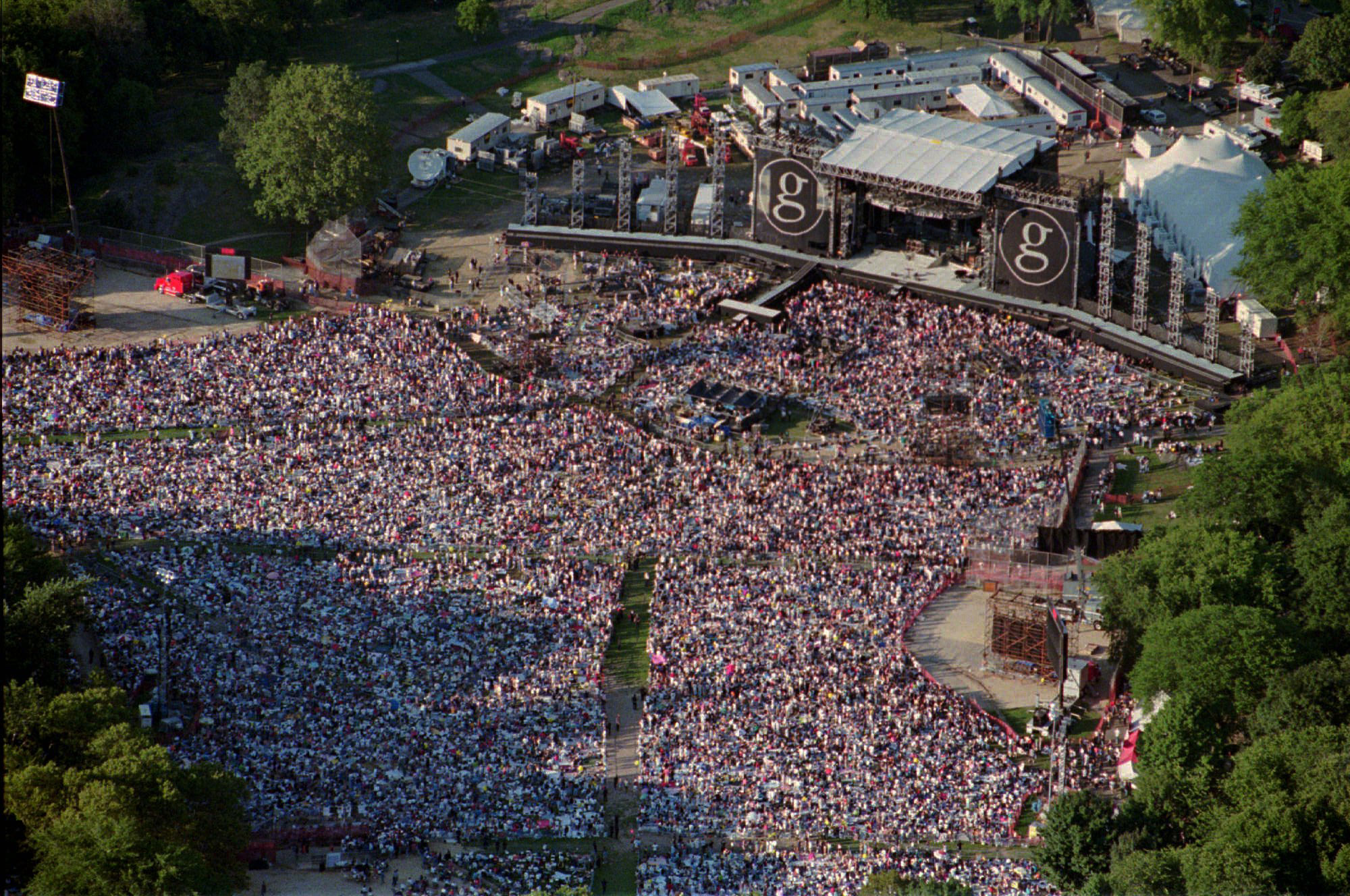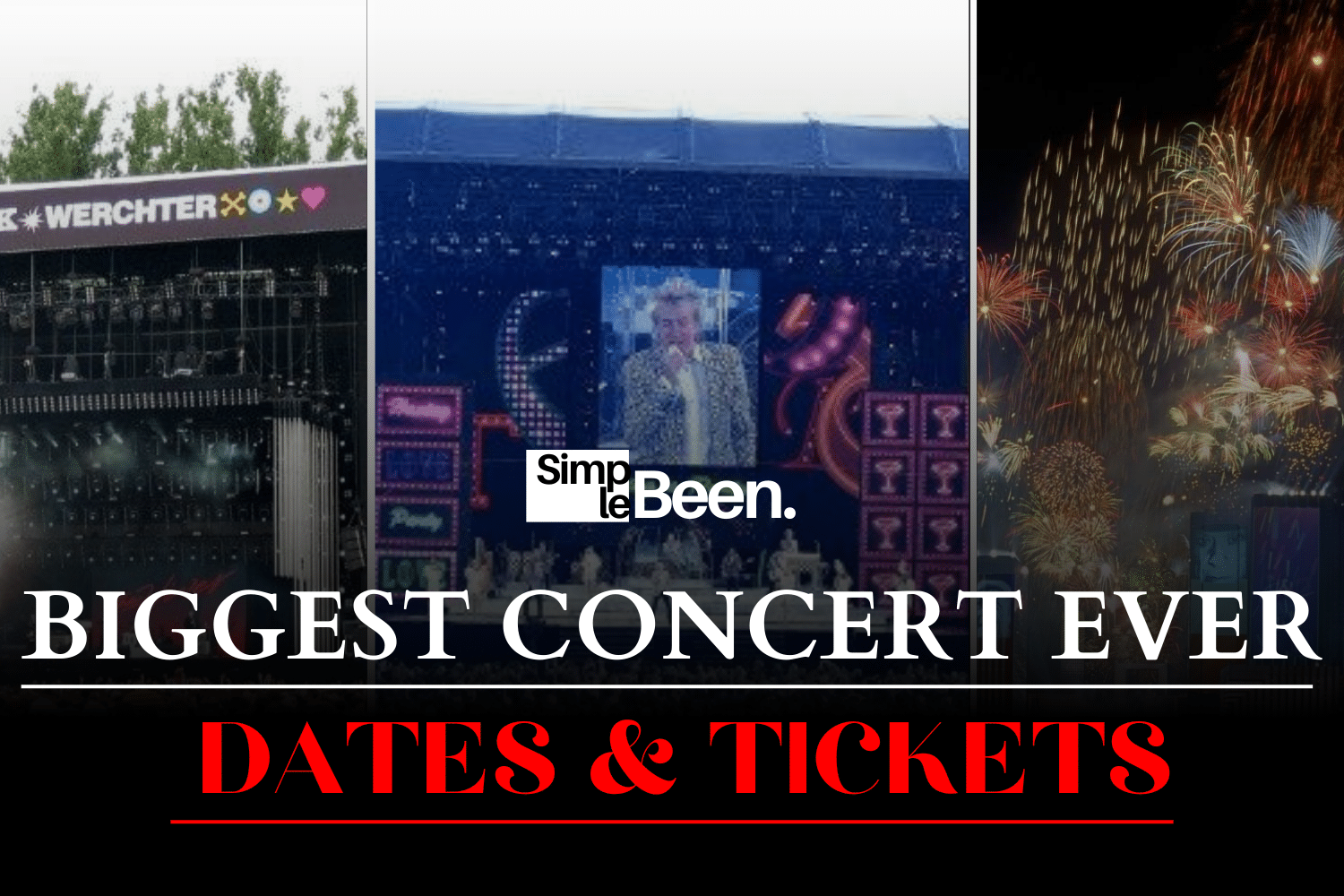What Was The Biggest Concert Of All Time? Unpacking Music's Grandest Gatherings
Have you ever stopped to wonder, really, what was the biggest concert of all time? It's a question that, quite frankly, gets music lovers talking, and for good reason. People often think about the sheer number of folks gathered, the roar of the crowd, or the sheer scale of the stage. But "biggest" can mean so many things, can't it? It's not just about who had the most people, though that's a huge part of it, of course.
Thinking about "biggest" reminds me a bit of how we talk about lakes, actually. To my mind, the largest is the one with the greatest surface area, yet the biggest may have a smaller surface area but be deeper and therefore contain more water, and so be "bigger" in a different way. That's how it is with concerts, too. Is it about attendance, or maybe the impact a show had on the world, or even the money it brought in? It's a bit of a puzzle, you know?
This discussion really helps us look at music history from a fresh angle, highlighting events that truly shaped the world of live performance. We'll explore some truly massive events, the kind that made headlines, and just perhaps, figure out what truly earns a concert the title of "biggest ever."
Table of Contents
- Defining "Biggest": More Than Just Crowd Size
- The Contenders for "Biggest Concert"
- Beyond Attendance: Other Ways to Measure Size
- The Lasting Impact of Mega Concerts
- Frequently Asked Questions
Defining "Biggest": More Than Just Crowd Size
When people ask "what was the biggest concert of all time," they are usually thinking about attendance, right? How many actual human beings were there? That's a pretty clear way to measure things, and it is that, a simple number. Yet, as we've seen with other big topics, like the year's biggest economic talking points or the top emerging technologies, "biggest" can have different meanings. A concert might be "biggest" because it had the most people, or it might be "biggest" because it changed music history, or even raised a lot of money for a good cause.
Some concerts, you know, are remembered for their cultural significance, even if they didn't have millions of people. Think about Woodstock, for example. It wasn't the largest by attendance, but its cultural impact was, arguably, huge. It really changed things for a lot of people. So, when we talk about "biggest," we need to consider all these angles, to be honest. It's not just a simple headcount.
For this article, we'll mostly focus on attendance, because that's what most people mean when they ask this question. But we'll also touch on other ways these events left their mark. It's like looking at the global risks report; some risks are immediate and obvious, others are deeper and affect things over time. Concerts are a bit like that, too.
The Contenders for "Biggest Concert"
Alright, let's get into the events that often come up when people talk about the biggest concerts ever. These are the ones that really drew massive crowds, sometimes in the millions. It's truly incredible to think about so many people gathered in one place for music, or a shared experience. These events, you know, really push the limits of what's possible for live gatherings.
Rod Stewart: Rio de Janeiro, 1994
On New Year's Eve in 1994, Rod Stewart played a free concert on Copacabana Beach in Rio de Janeiro, Brazil. This event is, very often, cited as having the highest attendance for a free rock concert. Estimates suggest that somewhere around 3.5 million people were there, which is a truly staggering number. It's hard to even picture that many people in one spot, isn't it?
The sheer scale of this gathering was, quite frankly, immense. People packed the beach for miles, all there to see Rod Stewart perform. It was a huge celebration, and that, is that, a truly memorable night for many. This concert definitely set a high bar for attendance records.
Jean-Michel Jarre: Moscow, 1997
Jean-Michel Jarre, the French electronic music pioneer, held a concert in Moscow's University Park in 1997 to celebrate the city's 850th anniversary. This event drew an estimated 3.5 million people, too. It was a spectacle of lights, lasers, and incredible sound, really. Jarre is known for his elaborate outdoor performances, and this one was no exception.
The concert was a massive production, transforming the city landscape into a giant stage. It was a unique blend of music and visual art, and apparently, it left a lasting impression on everyone who saw it. This event is, in some respects, a prime example of how technology can enhance a live music experience, much like how emerging technologies of 2025 are set to reshape industries.
Pax Romana (World Youth Day): Manila, 1995
While not strictly a music concert in the traditional sense, the World Youth Day closing mass in Manila, Philippines, in 1995, led by Pope John Paul II, holds the record for the largest single gathering in history. Estimates for this event go as high as 5 million people. It featured hymns and spiritual music, so it certainly had a musical component.
This gathering was, you know, a deeply significant event for millions of people. The sheer number of attendees makes it a strong contender for "biggest" by crowd size, even if it wasn't a rock show. It really shows the power of collective experience, doesn't it? It's a truly humbling number to think about.
The Rolling Stones: Rio de Janeiro, 2006
The Rolling Stones also played a free concert on Copacabana Beach in Rio de Janeiro in 2006. This show attracted an estimated 1.5 million people. While a smaller number than Rod Stewart's event on the same beach, it was still a truly massive gathering for a single band. It was part of their "A Bigger Bang" tour, and they certainly delivered a big show.
The energy on the beach that day was, apparently, incredible. The band played for hours, and the crowd was just electric. It showed that even years later, rock legends could still draw immense crowds. It's a testament to their enduring appeal, really, and the power of their music to bring so many people together.
Copacabana New Year's Eve Celebrations
It's worth mentioning that Copacabana Beach regularly hosts massive New Year's Eve celebrations that include live music performances. While not a single concert by one artist, these events often draw millions of people. For instance, some New Year's Eve events have reportedly seen crowds of 2 million or more. These are, in a way, ongoing examples of truly immense musical gatherings.
The scale of these annual celebrations is, quite frankly, astonishing. They show how a combination of public holiday, beautiful location, and live music can bring together a truly vast number of people. It's a bit like looking at the world's five biggest slums; the sheer scale of human gathering is, honestly, mind-boggling.
Beyond Attendance: Other Ways to Measure Size
While crowd numbers are often the main focus when we talk about what was the biggest concert of all time, there are other ways to think about "biggest." For instance, some concerts are remembered for their charitable impact. Live Aid in 1985, for example, raised millions for famine relief in Ethiopia. It wasn't about attendance records, but its global reach and fundraising success were, you know, truly monumental. That concert really showed what music could do for the world.
Then there's the cultural footprint. Woodstock, as mentioned earlier, wasn't the largest in terms of sheer numbers, but its legacy is, arguably, huge. It became a symbol of a generation and a pivotal moment in music history. Its influence, in a way, spread far beyond the field where it happened. It's a bit like the future of jobs report; it looks at trends that shape things for years to come.
Some concerts are also "biggest" in terms of production scale. Think about U2's 360° Tour, which featured a massive, claw-like stage that could be seen from all angles. While not breaking attendance records for a single show, the tour itself was, truly, a huge undertaking in terms of logistics and technology. It showed how much effort goes into making a truly grand live experience. The complexity of these productions is, quite honestly, something else.
The Lasting Impact of Mega Concerts
These truly huge concerts, regardless of how we measure "biggest," often leave a lasting mark. They become part of cultural memory, talked about for years afterward. People remember where they were, or how they felt, or what they saw on TV. They can inspire, unite, or even spark social change. It's pretty amazing, really, how a single event can have such a wide reach.
These events also push the boundaries of event planning and security. Managing millions of people in one place is, obviously, a huge task. It requires incredible coordination, much like addressing cybersecurity blind spots or preparing for complex threat landscapes. Organizers have to think about everything, from crowd control to medical aid, and that is a lot of work.
Ultimately, the "biggest concert of all time" might not be one single event. It might be a collection of moments that, together, show the immense power of music to bring people together on a grand scale. It's a pretty cool thought, isn't it? To learn more about music's impact on our lives, you can explore other articles on our site, and perhaps you'd like to check out Guinness World Records for more official figures on large gatherings.
Frequently Asked Questions
People often have a lot of questions about these huge musical events, and that's understandable. Here are some common ones, to be honest, that pop up.
What concert had the most people in attendance?
The concert with the most people in attendance is widely considered to be Rod Stewart's free concert on Copacabana Beach in Rio de Janeiro in 1994, with an estimated 3.5 million attendees. Jean-Michel Jarre's Moscow concert in 1997 also reported a similar figure. However, if you include non-traditional concerts, the World Youth Day closing mass in Manila in 1995, with Pope John Paul II, had an estimated 5 million people, and it featured musical elements, too.
What was the biggest paid concert ever?
When it comes to paid concerts, the numbers are usually much smaller than free outdoor events. While specific attendance figures for the "biggest paid concert" can be hard to pin down definitively due to various reporting methods, artists like Michael Jackson, U2, and Ed Sheeran have held massive stadium tours that drew millions over many dates, but no single paid show has approached the free concert numbers. For a single show, it's often more about revenue than attendance, actually.
What is the biggest music festival ever?
The biggest music festival ever is often debated, but many point to events like Donauinselfest in Vienna, Austria, which is a free outdoor festival that consistently draws over 2 million visitors over a few days. While not a single concert, it's a massive, multi-stage event that, you know, truly showcases music on a huge scale. Other festivals like Rock in Rio or Summerfest also draw very large crowds, and that's pretty impressive.

Biggest Concerts of All Time | WTOP

20 Biggest Concerts Ever Of All Time (Largest By Attendance)

20 Biggest Concerts Ever Of All Time (Largest By Attendance)